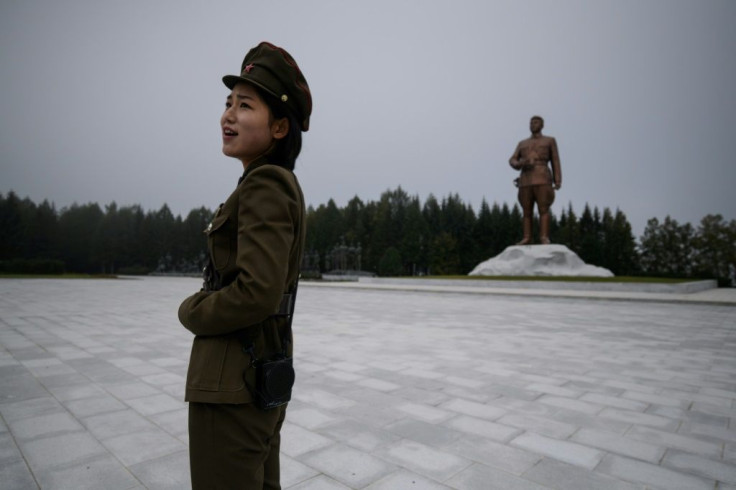Giant Construction Project Takes Shape In Remote North Korea

Like a scene from an epic film, thousands of workers swarm over the building sites of Samjiyon, a monumental construction project in the far reaches of North Korea ordered by leader Kim Jong Un.
They clamber over wooden scaffolding and dangle from window frames, and whether they are carrying loads, sifting sand or mixing concrete, most of the work is carried out by hand.
The plan involves nothing less than the rebuilding of the entire town of Samjiyon, the seat of a county that includes the supposed birthplace of Kim's father and predecessor Kim Jong Il, and Mount Paektu, the spiritual birthplace of the Korean nation.
It encompasses a museum of revolutionary activities, a winter sports training complex, processing plants for blueberries and potatoes -- two of the area's most important crops -- a new railway line to Hyesan, and 10,000 apartments.
It is the kind of showpiece scheme that can only be launched by a state as monolithic as North Korea, where authorities can decide to deploy vast amounts of resources and manpower to a single goal and implement it by order.
The results can be striking -- thousands of houses were built in just three months after flooding hit North Hamgyong province in 2016.
But doubts have been raised about the sustainability of such projects once the physical infrastructure is established, with questions over issues ranging from utility supplies to durability and economic viability.
'Home of our revolution'
Leader Kim has himself addressed such concerns on his several inspection visits to Samjiyon -- one of which, last year, saw him photographed sitting with officials on a mountain of potatoes, which he is encouraging to diversify the food sources in the chronically undernourished North.
The builders should prioritise quality over speed, he told them at the time, with the official Korean Central News Agency (KCNA) citing him saying that if construction was "gorgeous in appearance but poor in substance, it will be blamed by the people and future generations".
He has also stressed the need to ensure sufficient electricity supplies in the drive to turn Samjiyon, the "home of our revolution" into "a highly civilised mountainous city" and "the richest county in the country", according to KCNA.
It is an ambitious goal in a remote, challenging environment, with long, bitterly cold winters and mountainous terrain, and an area where many roads are still unsealed.
According to local officials, around half of the workforce in Samjiyon county -- which has a population of 25,000 -- are employed in maintaining its historic sites and related activities, 20 percent in agriculture and the rest in industry, including food processing.
'Hostile forces'
Pyongyang has given no figures for the cost of the redevelopment, which will open in phases with Kim ordering completion by the 75th anniversary of the foundation of the ruling Workers' Party of Korea in October next year.
Some of the Samjiyon buildings already appear finished with their exteriors tiled, others remain just concrete shells.
Many of the builders are soldiers -- much of the North's army is devoted to construction -- while others are civilians, and they work even on the harvest holiday of Chusok, one of Korea's most important traditional festivals.
Students have been sent to work on the scheme during university holidays and some of those on site appear to be teenagers.
But while the North is never short of manpower, observers suggest that sanctions imposed on Pyongyang over its nuclear and ballistic missile programmes have impacted projects such as Samjiyon and the giant Wonsan-Kalma tourist development -- which has repeatedly been delayed -- on the west coast.
KCNA quoted Kim in April calling Samjiyon "a fierce class and political struggle against the hostile forces seeking to check the advance of the DPRK".
© Copyright AFP 2024. All rights reserved.





















